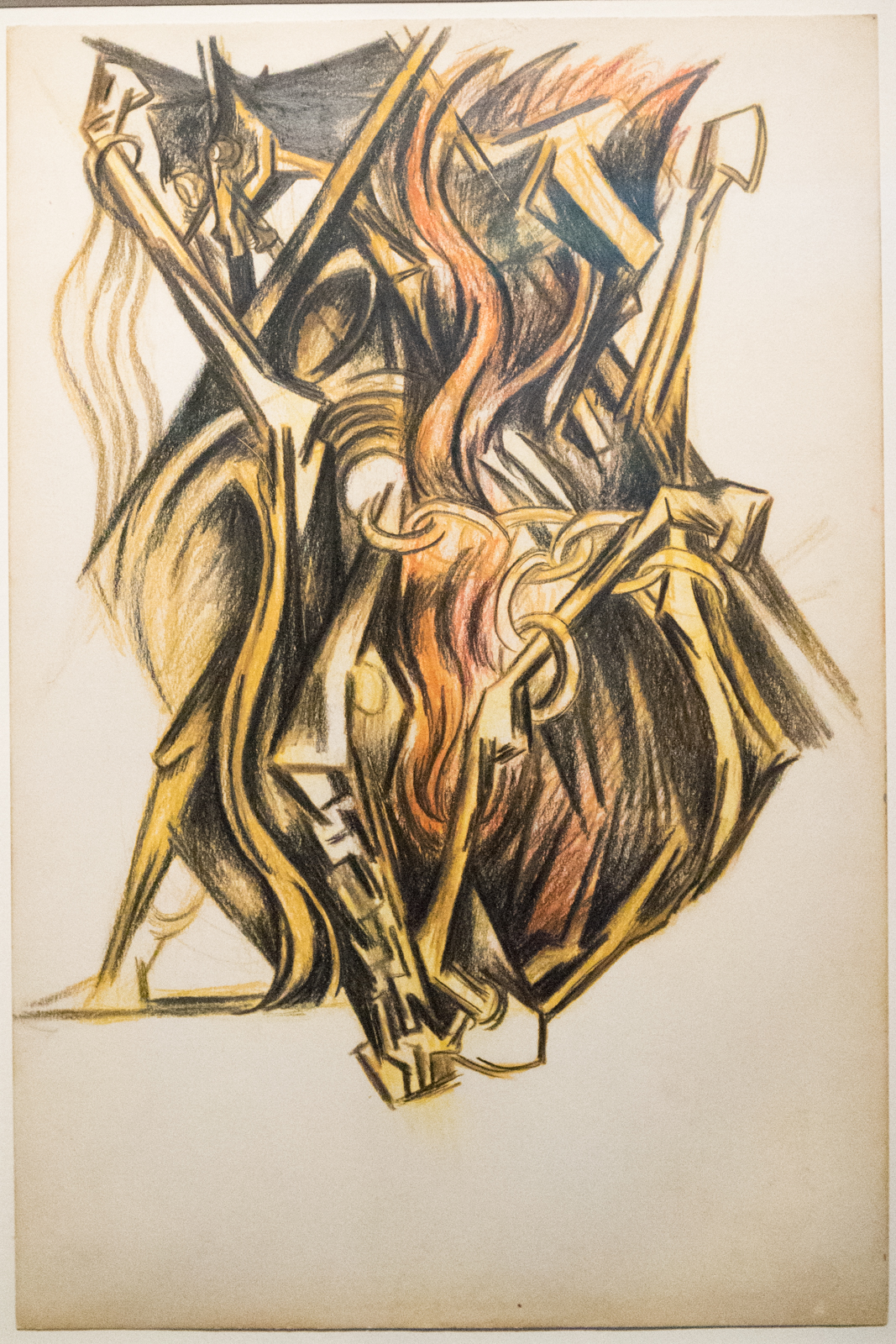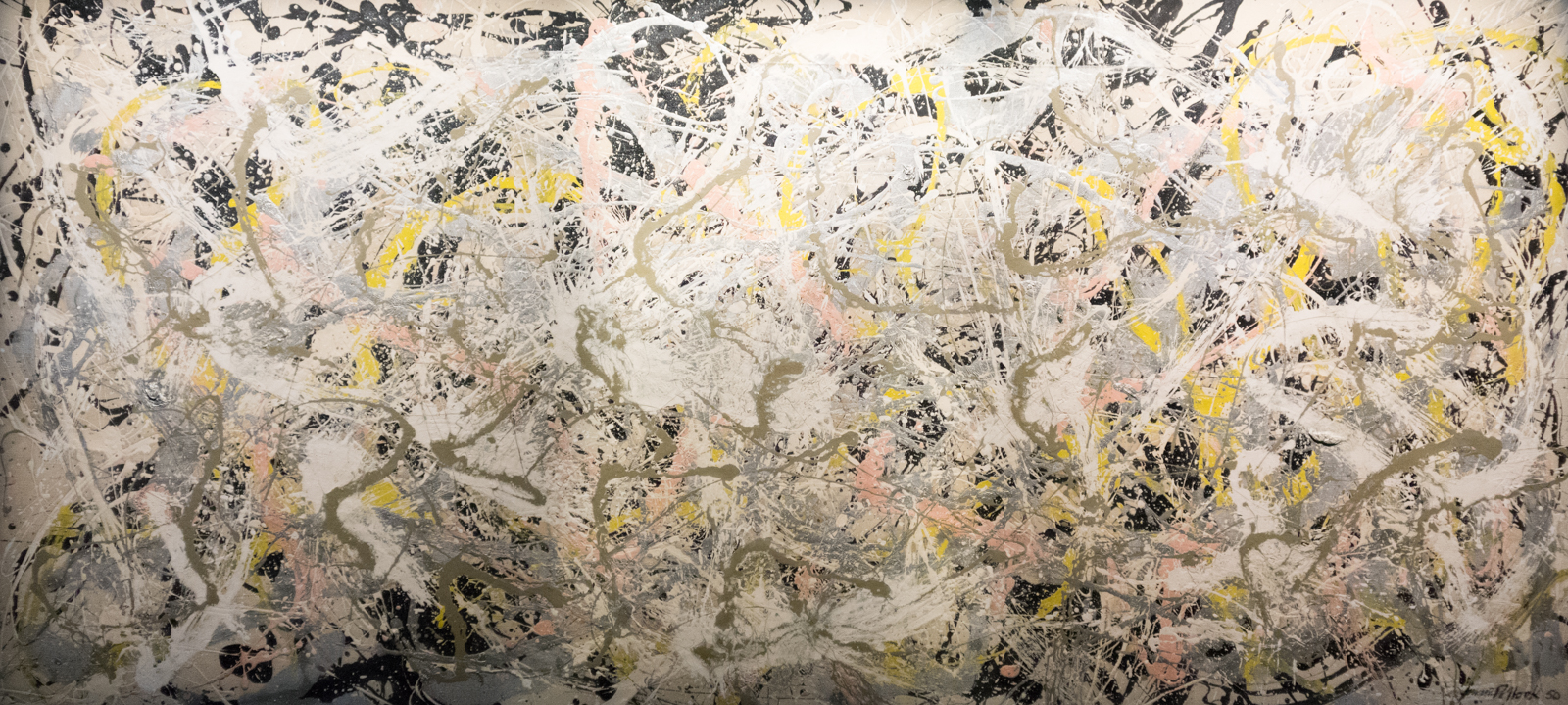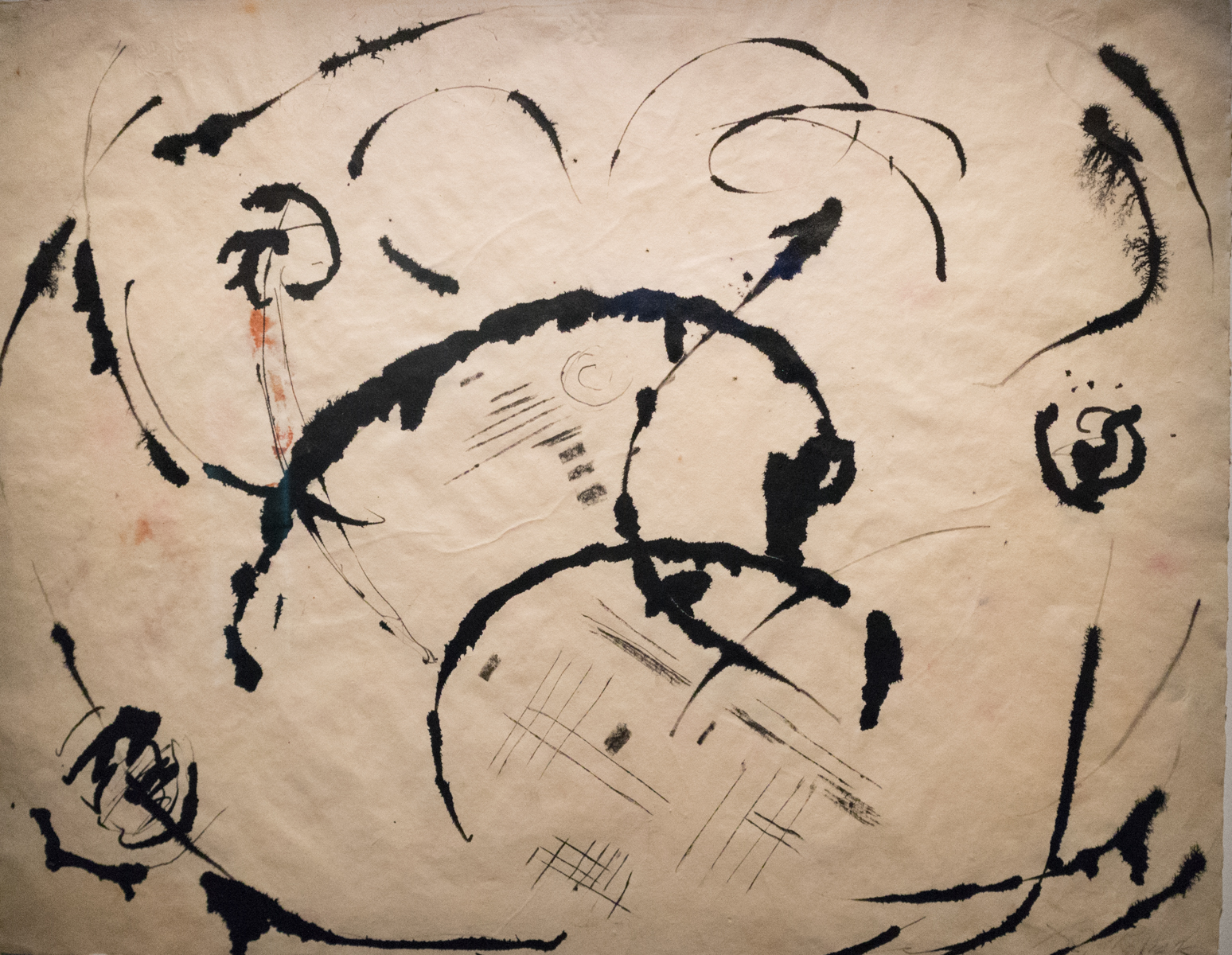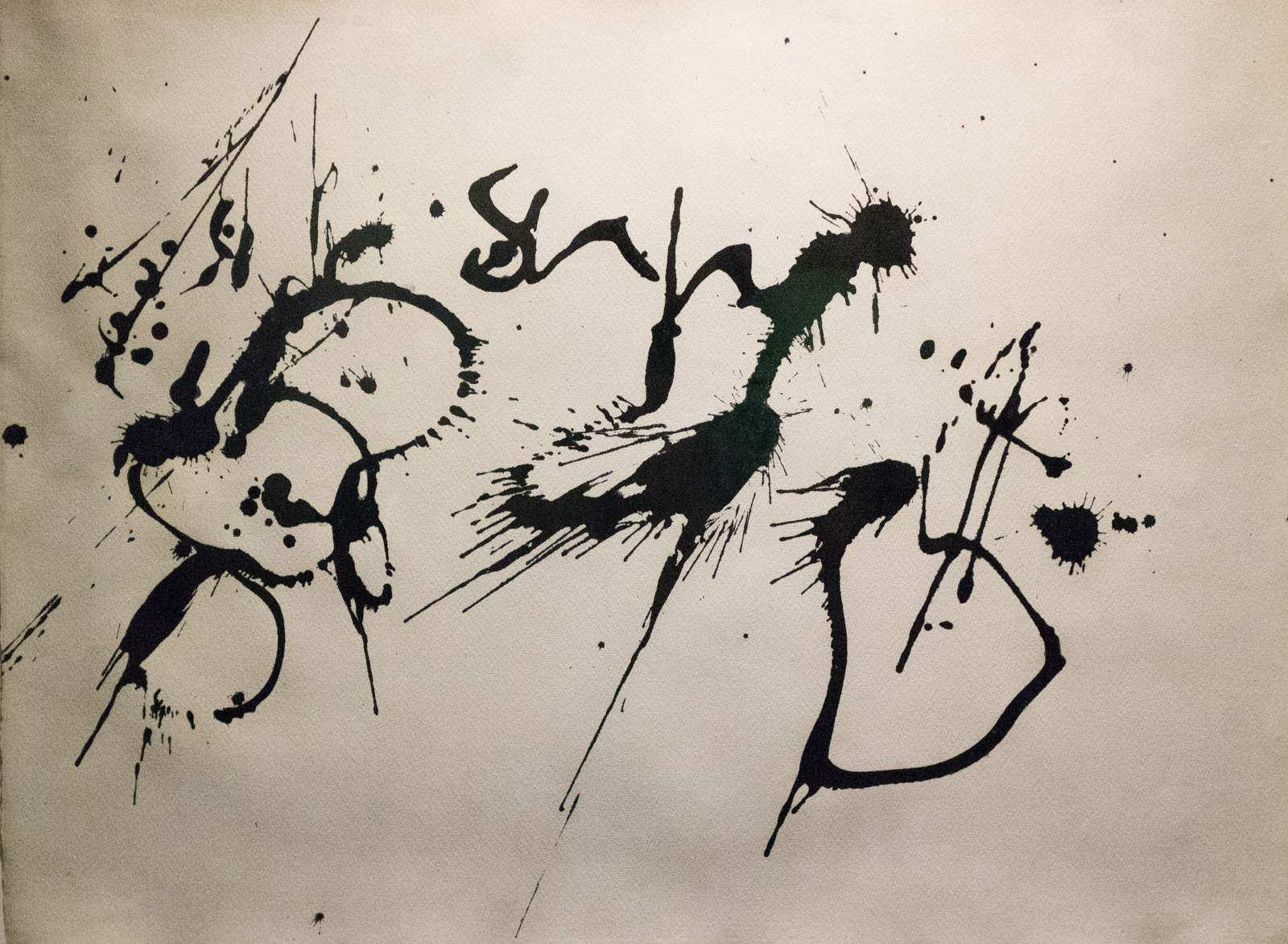
Jackson Pollock was one of the most famous artists of his day. He broke the mold, in some ways, with his paintings as well as his lifestyle.
Pollock even seemed to inspire art critic Harold Rosenberg’s term “action painting.” Pollock was acclaimed and promoted by very influential art critics and collectors, but also derided by others. His art was described as anything from “a joke” to “great art.” Life magazine ran an article on Pollock in 1949 with a nice overview of responses to his art. It read,

Recently a formidably high-brow New York critic hailed the brooding, puzzled-looking man shown above as a major artist of our time and a fine candidate to become “the greatest American painter of the 20th Century.” Others believe that Jackson Pollock produces nothing more than interesting, if inexplicable, decorations. Still others condemn his pictures as degenerate and find them as unpalatable as yesterday’s macaroni. Even so, Pollock, at the age of 37, has burst forth as the shining new phenomenon of American art.
Click here for the complete text from Life article with images of the magazine spread.

Pollock’s art still brings out strong and opposing reactions from viewers. What did art critics see in his art that made it special? Why the claim that he could possibly be the best American artist of the 20th century?

Pollock was using materials in a different way. He put his canvas on the ground so he could walk around it and paint from every angle, creating an “all-over painting” that didn’t have a specific orientation. His canvases were mural-sized. He also used industrial house paint instead of oil-based paints.

The house paint had a different syrup-like texture. The texture allowed him to pour and drip and splatter his canvases. He couldn’t have used oil-based paints in the same way. He also sometimes used an unprimed canvas, allowing the paint to soak into the canvas. Pollock introduced sand, string and wire mesh into his paintings.

However, Pollock’s volatile nature couldn’t be separated from his paintings. Pollock’s paintings have an energy unseen in other abstract work. Art critic, Clement Greenberg said, “[His] superiority to his contemporaries in this country lies in his ability to create genuinely violent and extravagant art without losing stylistic control.” Greenberg described Pollock’s abilities as, “volcanic. It has fire. It is unpredictable. It is undisciplined.” Maybe to dispel the madman myth, Pollock allowed Hans Namuth to film him in 1950 as he painted.

Pollock had new ideas about art and new ways to achieve expression. His passion and training, as well as techniques and materials, were all necessary parts of his genius.
For more information on Jackson Pollock, The Museum of Modern Art has a detailed timeline on his life.



Leave A Comment